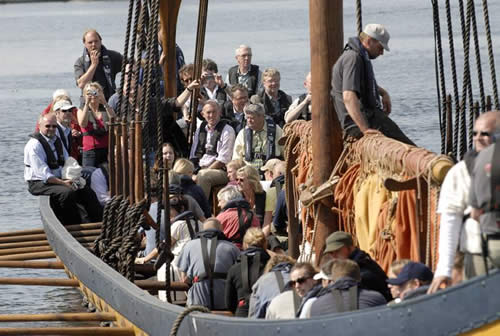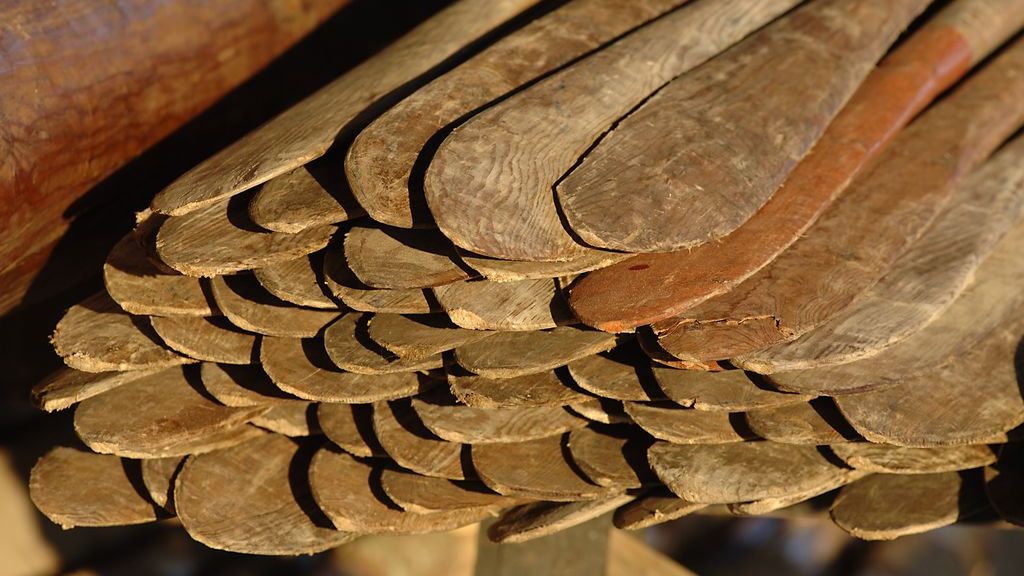BBC was there - so was Danish television DR and RTE, the national Irish television.
The story about the worlds biggest reconstruction of a Viking ship - the Sea Stallion from Glendalough – and the ships test sail across the North see, north of Scotland and onwards to Dublin has, for the last couple of weeks, been told around the world.
In South Africa, Vietnam, China, Japan, Malaysia, Slovenia, on the Farao Islands, in Austria, Poland and the United States just to name a few.
And then last weekend Danish and International medias came to the Viking Ship Museum in Roskilde to hear more about the biggest project in experimental archaeology ever.
A great interest in Ireland
Several Irishs medias including RTE, the Irish Times, History Ireland and the Evening Herald – went to Roskilde to follow the preparations for the test sail that will provide the answers for numerous questions connected to the impressive viking war ships; how manoeuvrable were they, how fast could they cross the North see, which organisation was needed and which challenges would the leader of a war fleet face trying to keep his crew members and warriors fit for fight?
The interest in Ireland is building up fast. And it's no wonder. The Sea Stallion from Glendalough is a reconstruction of a Viking ship build in Dublin 1042. Three decades later the ship ended up on the bottom of Roskilde Fjord.
Reserch and modern adventure
”The interest is enormous. The questions asked are always either about the actual sail or the scientific angle: Most of the questions about the sail are fouced on the challenge the sixty-five crew members are facing on their way to Ireland, sailing an open ship in unpredictable waters for six weeks,” says project leader Preben Rather Sørensen.
”Other questions focus on the research connected to the test sail. The museum is experiencing a great interest in the way they carry out their research and communicate to the public. When we want to know how the vikings buildt a ship - we build one ourselves. And when we want to figure out how they sailed and manoeuvred - we sail in the same waters as back then,” Preben Rather Sørensen explains.
” There is also a huge interest in the Sea Stallions website and the communication of history, maritime archaeology and ship building planned to follow actual updates from the ship - updates about the speed, course, the position of the ship and daily stories about life on board”.
Prized magazine
The combination of modern adventure and serious research attracted the attention from BBC and the prized American magazine The Smithsonian.
”The biggest challenge in communicating the project is telling one story but from many different angles. The diversity can vary from a story about how the crew members go to the toilet on a ship like the Sea Stallion, were there is none, to a story about the possible role of the original ship in the attempt to defeat Wilhelm the Conqueror in the epilogue to one of last battles of the Viking age. It's quite difficult - but great fun. And most of all the worldwide interest is extremely motivating,” says Preben Rather Sørensen.
LH



